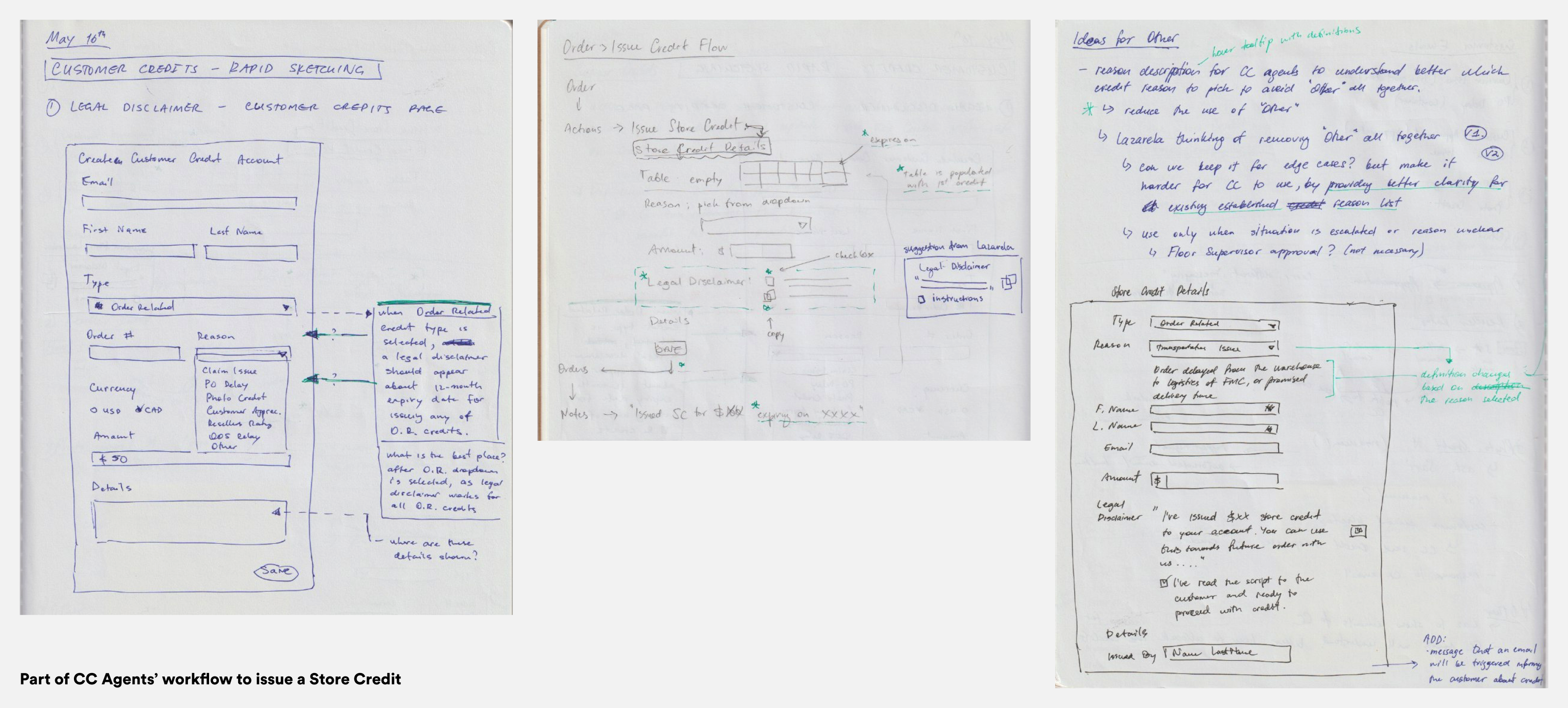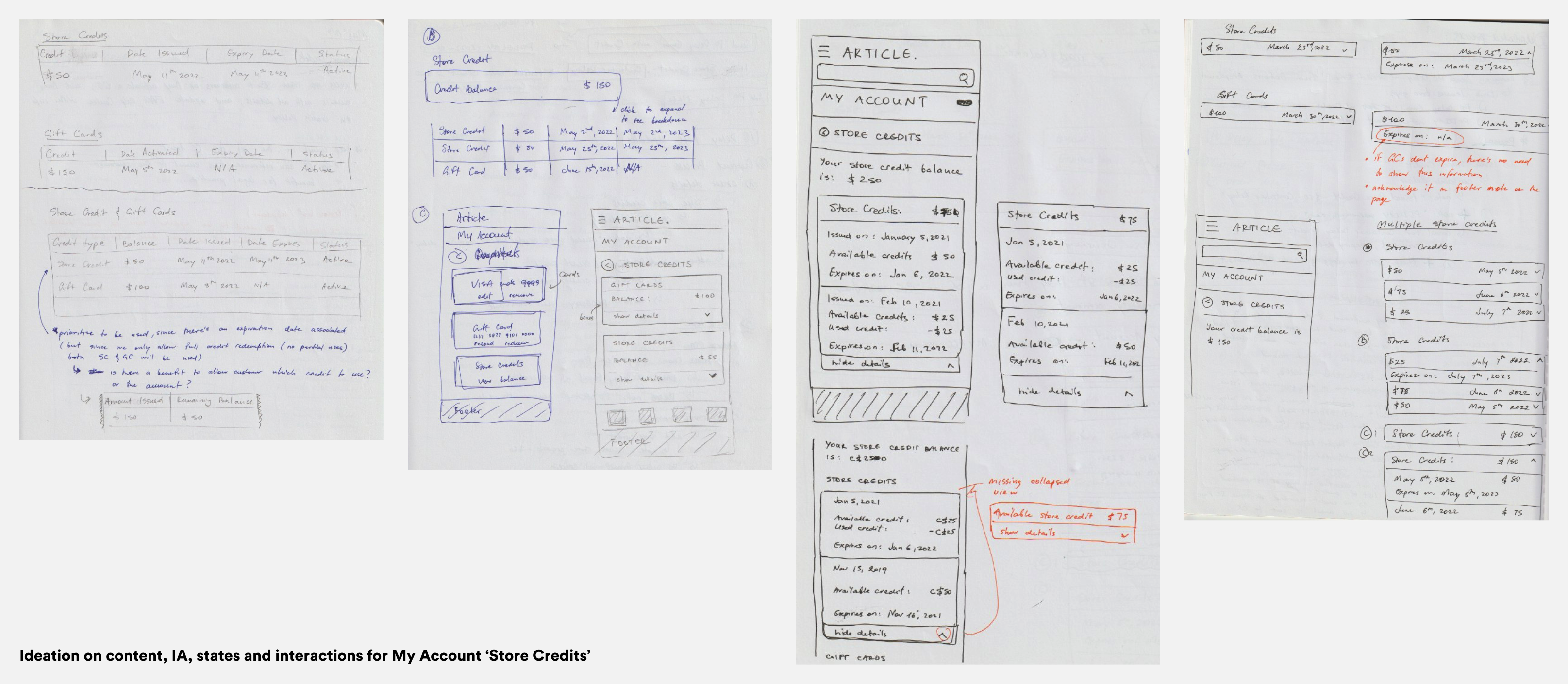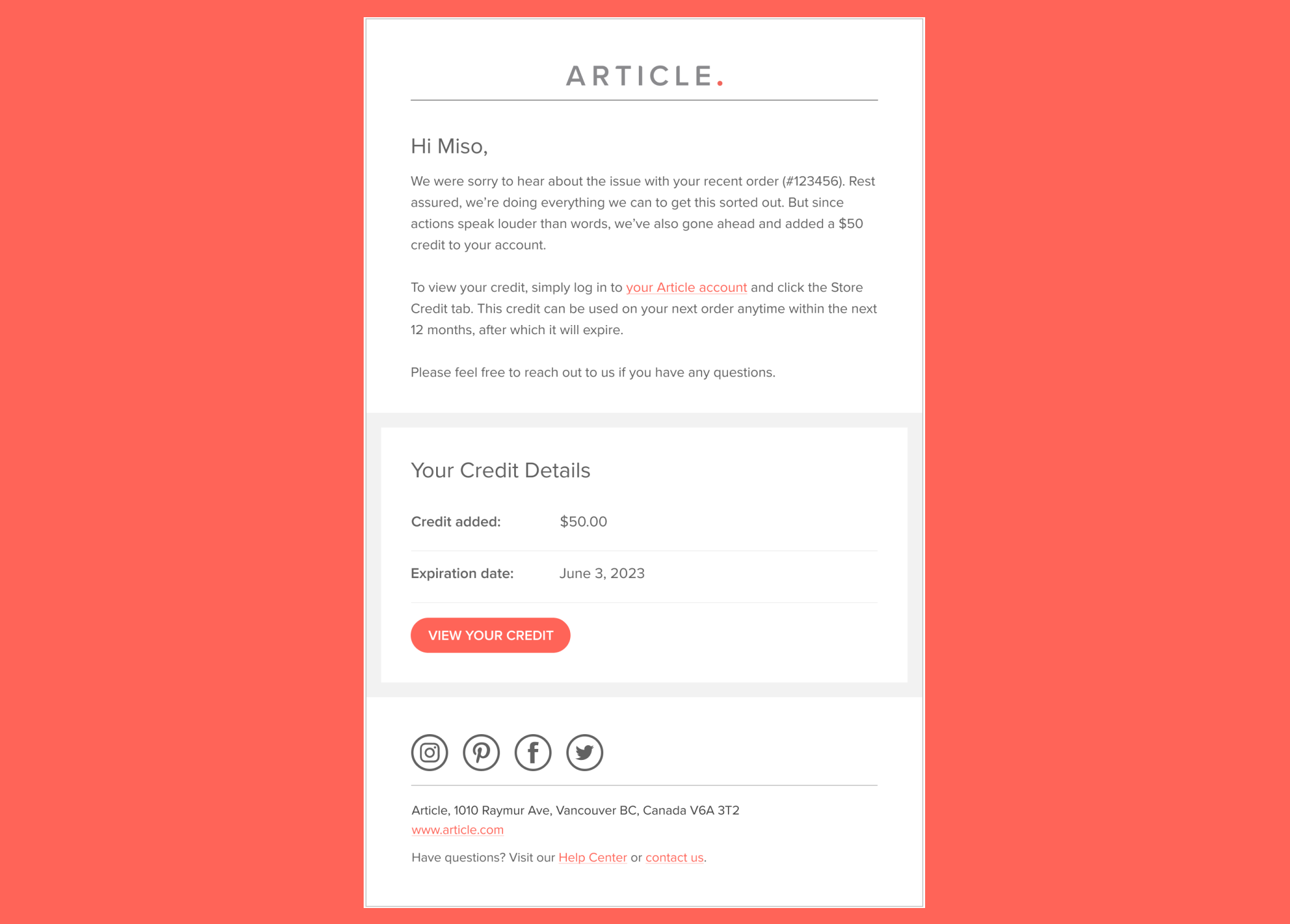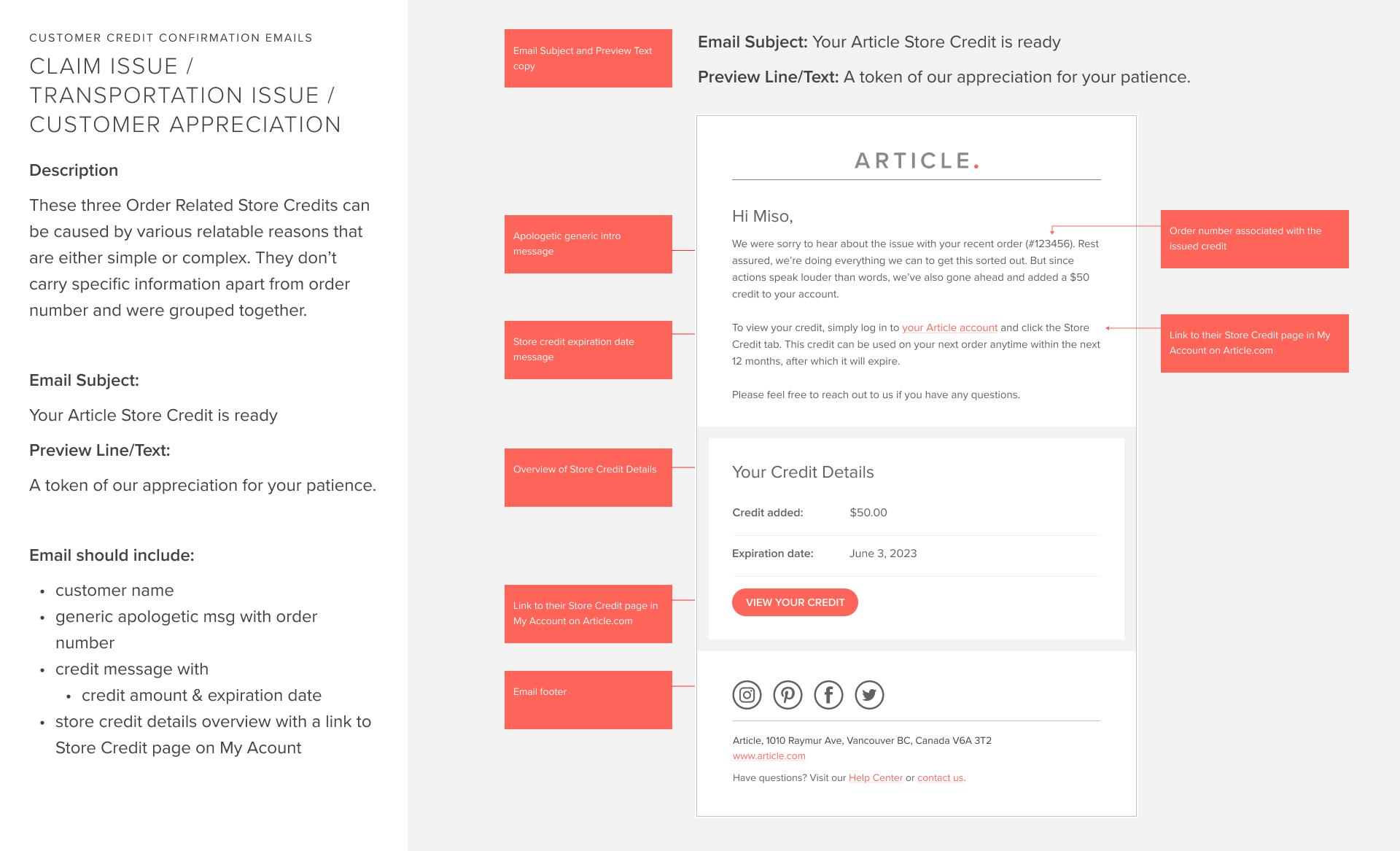Article.com
As a Product Designer for Article.com I created and optimized internal user workflows and customer-facing experiences for the Post-Purchase Experiences and Customer Care Services. Working together with a Product Manager, Senior Product Designer, and a team of Software Engineers I designed new features and iterated on existing internal workflows for the Customer Care, B2B/Trade, Finance, and Payments users.
Customer Store Credits
↳ Project Summary
Users
1. Customers, who receive store credits due to issues on current orders.
2. Customer Care Agents, who use internal business management software to issue store credits to customers.
Problem
1. CC Agents currently undergo a manual step-by-step process with order-related issues that requires careful attention to detail, which can cause occasional mistakes when dealing with hundreds of orders per day. The existing workflow to 'Issue a Store Credit' is not optimized for the incoming 12-months store credit expiration policy and would add more details to existing workflow full of intricate order details.
2. Current customers with store credits on their accounts have a limited visibility into their store credit information.
Approach
Iterative design approach: in-depth internal process research, stakeholder and user interviews, mockups, interactive prototypes, validation with users, User Acceptance Testing with software engineers, usability testing (unfinished), and stage implementations.
Solution
Partial automation of internal processes with more user-friendly system feedback, and improved customer experience on A.com and via email communication touchpoints.
Special note
* During the final launch stage, a company-wide layoff suddenly took place. I lost all access to my work and did not receive a big part of my design work related to internal processes as part of the NDA. Thus, simplified versions of some internal artifacts have been created instead for presentation purposes.
↳ Initial Problem
As the Finance team introduced a new 12-months expiration policy for certain store credits issued to customers experiencing issues with their orders, they requested a straightforward design change within the internal process. However, after reframing the problem to "How would this impact customer experience and Customer Care Team?", I discovered that current process to 'Issue a Store Credit' has multiple entry points built internally for different users and can trigger other parts of the system without other users' knowledge. In addition, experience on A.com lacked awareness and clarity regarding store credit information. After presenting these issues to my PM, Finance, and Customer Care, we agreed that an upfront solution would impact the experience for existing customers and the Customer Care team workflow and some research required before proposing any changes.
↳ My Process
UX Audit of A.com experience and internal workflows, Informational interviews with Stakeholders and Users, Competitive Analysis of other online furniture retailers, and a Service Blueprint to capture artifacts in one place to build a holistic view of all internal store credit processes, current customer communication touchpoints, and My Account experience.
Findings
1 . Internally, there are 2 main entry points to issue store credits by either Customer Care, Finance, Trade, or Marketing. Additionally, Customer Care has 4 more entry points for edge-case customer scenarios that add unnecessary complexity and overall a disjointed workflow on the front-end. Unless a CC Agent would be familiar with the entire store credit process, it would be hard to find some of these entry-points.
2. Store Credit emails are sent out manually by either CC Agents, Marketing, Trade/B2B, or Finance after a continuous thread with a customer regarding their order issue; they vary in content structure and brand language. There is no way of tracking these emails across departments.
3. In 'My Account' section on A.com, customers can only see a total Store Credit amount, that can include balance from a Gift Card which never expires. There is no way to check expiration date for the Store Credit, nor distinguish a Store Credit from a Gift Card. In addition, Help Center page does not provide any explanation regarding store credits.
Below is a simplified version of the Service Blueprint I created that captures parts of the internal process. For this stage of the Store Credit Epic, it was agreed by PM, Stakeholders, and Engineering to focus on the Customer Care Agents workflow, as they would be impacted the most by the changes.
.png)
Design Ideation - Internal Workflow
Through close collaboration and observation of CC Agents (main users), I gathered a list of main pain-points (interface interactions, information architecture, system feedback, data entry) within their current workflow. I switched to design ideation focused on optimization and integration of the new 12-months expiration policy, validating every feature idea with CC Agent Lead who's familiar with the SOP for issuing store credits.

Design Ideation - My Account 'Store Credits'
Currently, both Store Credits and Gift Cards don't expire, hence showing the total amount in My Account is sufficient. However, introducing the 12-months expiration policy would add complexity to a Store Credit history (if one exists) for a customer, with possible different amounts, issue and expiry dates. This led to design ideation that would include essential store credit information a customer would inquire about from CC Agent. I incorporated CC Agent's feedback with ideas from a simple competitor analysis done on CB2, Best Buy Canada, IKEA, Indigo, and Wayfair customer accounts: store credit details and history, store credit states (active/used/expired), visual separation of Store Credits from Gift Cards, etc.



.png)






